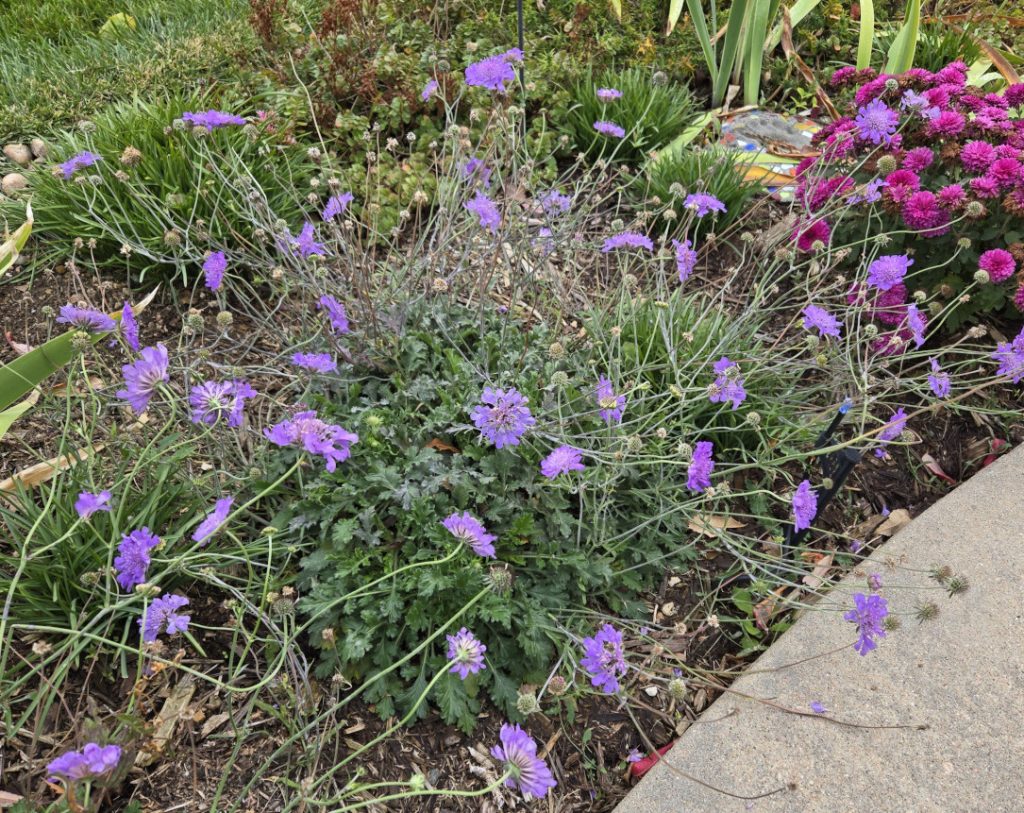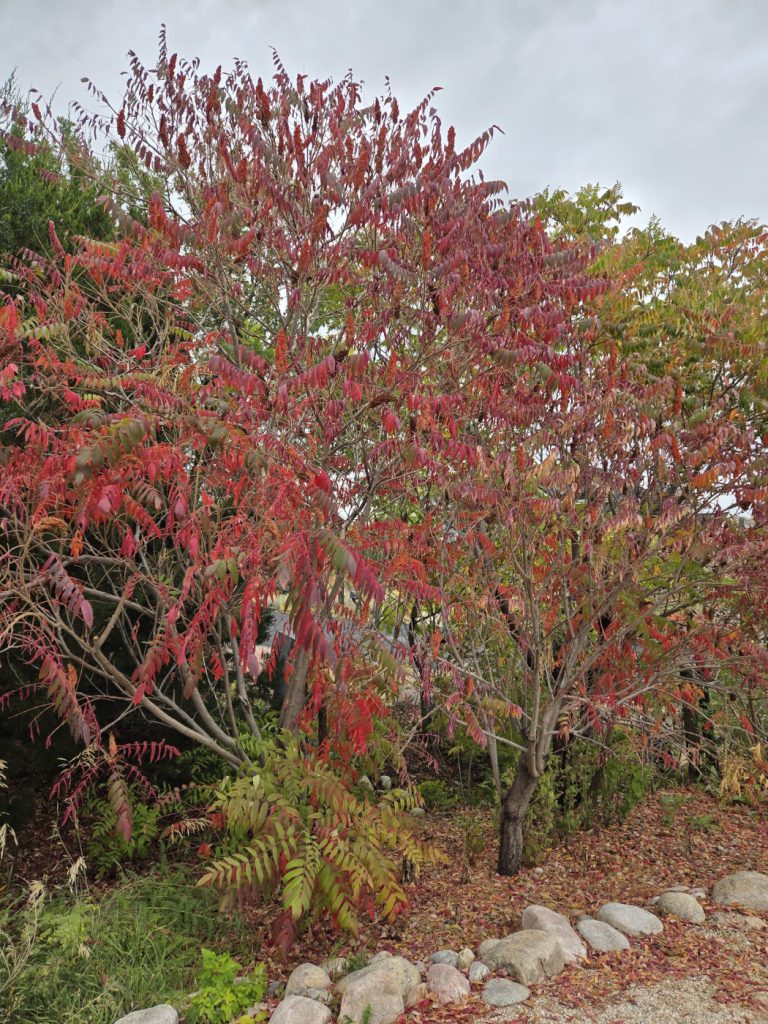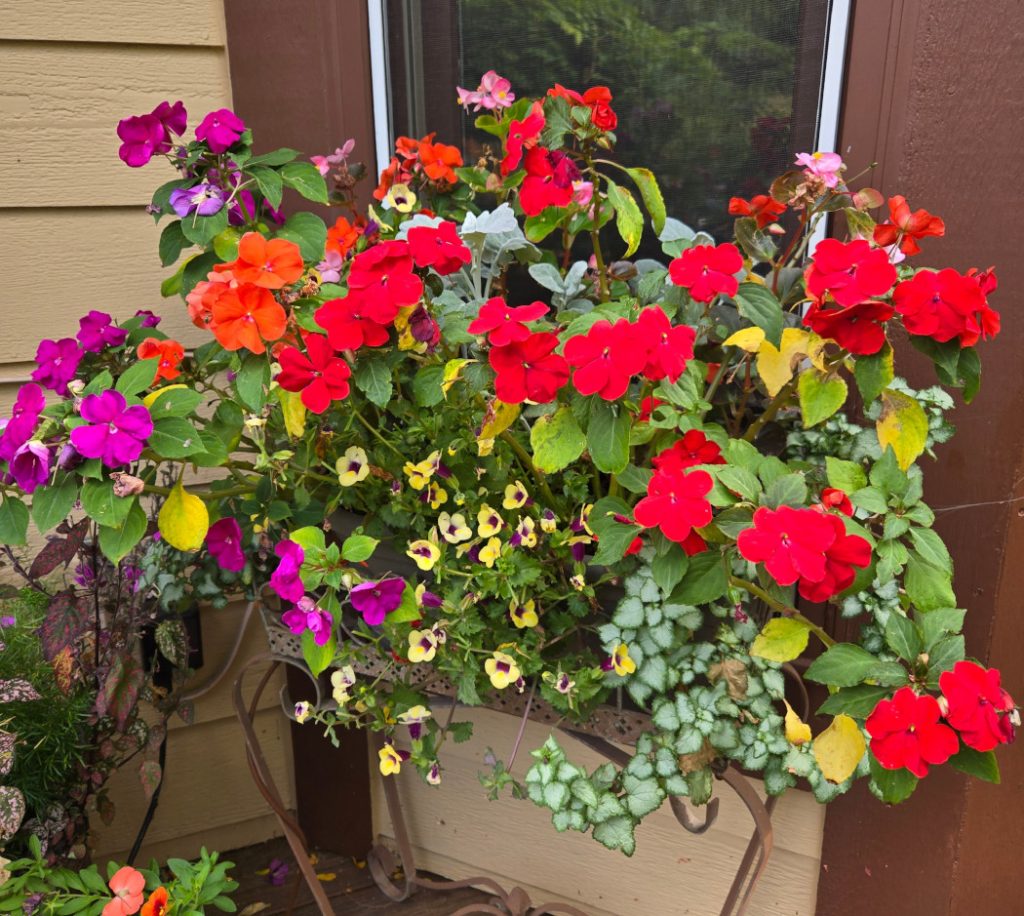
♥Love this!♥
If I had to choose one flower to be my all-time favorite, I think it would be Pincushion Flower (Scabiosa columbaria). I love this plant because it has a lovely, rounded growth shape; it blooms continuously for months without any intervention from the gardener; it produces an abundance of flowers; it doesn’t mind dry soil; and it also attracts butterflies and bees. The puffy flowers are either pink or purple and are held up on thin, wiry stems about 12” above a mound of basal foliage. If you look closely, the stamens look like tiny pins stuck into a pincushion. The plant looks nicer if you remove the spent flowers down at the base of their stems, but since the plant is covered with flowers, that isn’t really required.

♥Love this!♥
Western/Smooth Sumac (Rhus glabra) turns a blazing red color in fall. After the leaves all drop, the cone shaped clusters of berries remain on the shrub. The birds and squirrels eat them over the winter. These berries can be dried and ground and used as a spice. The spice has a tart, earthy flavor with a citrus-like aftertaste, and is quite mild. It is popular in Middle Eastern cuisine. This native shrub grows to about 15 feet tall and spreads aggressively by suckers/runners. If you have a space for a miniature forest, Sumac is a good choice. If you’d like dry some berries and try the spice, hit me up! My Sumac has LOTS of berries ready for harvest.

😢So Sad😢
I’m enjoying my annual flowers for as long as I possibly can, but I know the frost is coming. Honest, I took this picture yesterday – October 8th. The flowers have enjoyed a nice long season and I’ve loved them and will be so sad when they succumb to cold. After the frost comes, I will clean out the containers, composting the plant material. I’ll remove as much of the root material as I can and save about 1/2 to 1/3 of the soil to reuse next year.
Wondering what yard work you should do before and after the frost comes? There’s a good list on this blog post.
If you’d like to save some of your annual plants, this blog post has some good information on over-wintering tender plants.



